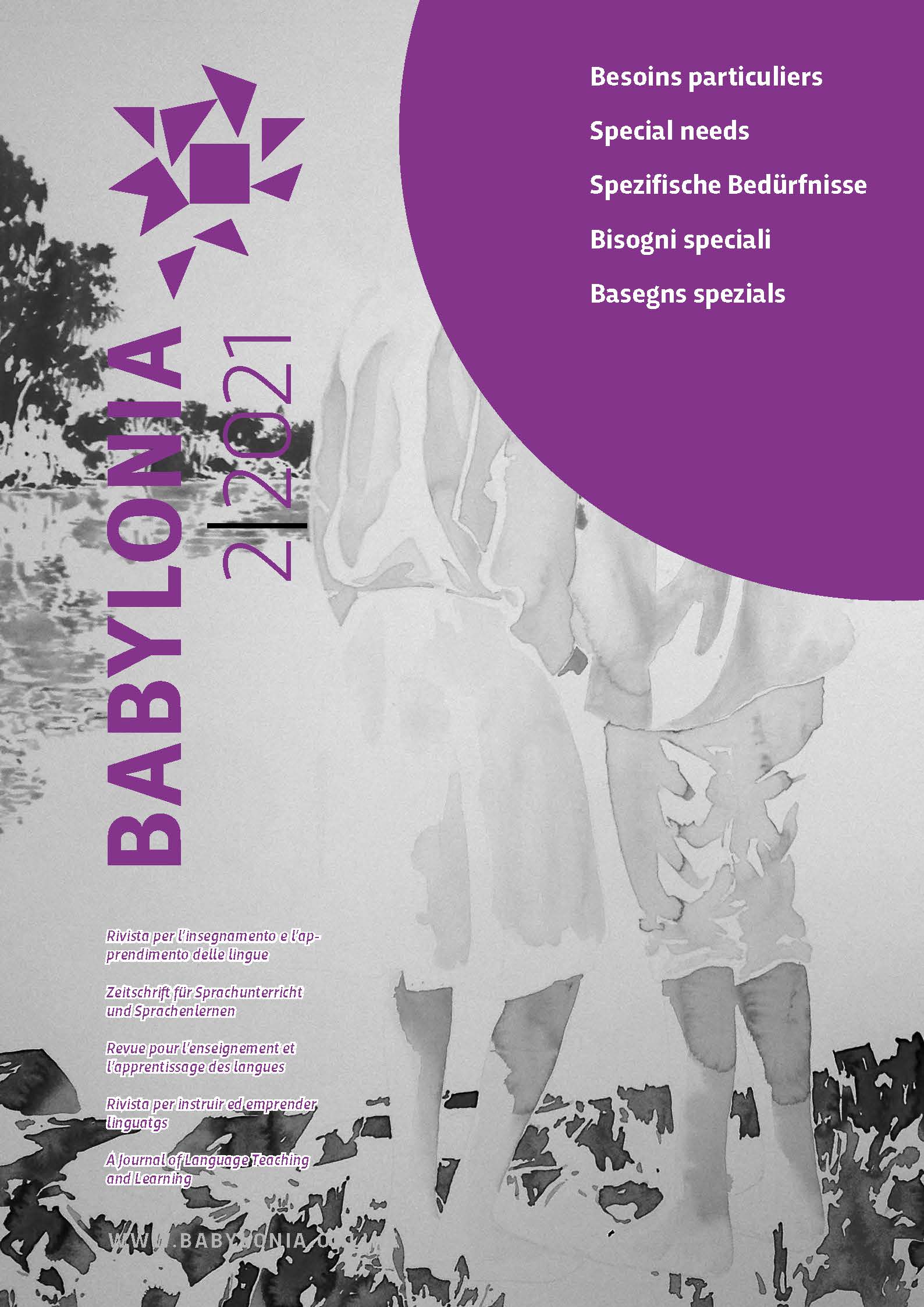Apprentissage des langues étrangères et secondes chez l’enfant ayant des besoins particuliers : quand la diversité de profils et de contextes nous pousse à repenser le diagnostic, la formation des enseignants et l’enseignement
DOI :
https://doi.org/10.55393/babylonia.v2i.147Mots-clés :
besoins particuliersRésumé
En fonction des sources, il est estimé qu'entre 1 et 7% des enfants ont des troubles d’acquisition du langage oral et qu’entre 5 et 10% sont atteints de troubles liés au langage écrit. En Suisse, chaque classe du niveau primaire compterait ainsi en moyenne 3 enfants ayant des besoins particuliers (dysphasie, dyslexie, dyscalculie, dyspraxie, hyperactivité, trouble de l’attention, etc.). Certains de ces enfants sont issus de l’immigration et sont confrontés à des situations qui leur posent de véritables défis quant aux apprentissages scolaires en L2 et à leur insertion sociale dans le pays d’accueil. Aux troubles langagiers s’associent alors des efforts de socialisation dans la communauté, non seulement de l’enfant mais de toute sa famille.
Dans ce numéro de Babylonia, nous proposons une réflexion sur les besoins en ce qui concerne l’apprentissage des langues étrangères et secondes des enfants ayant des troubles d’apprentissage et des troubles du langage. Ce numéro spécial appréhende ainsi la vulnérabilité à laquelle les enfants ayant des besoins particuliers sont confrontés au cours de différentes situations d’apprentissage et, plus généralement, au cours de leur socialisation. La diversité des contextes sociaux concernés par ce numéro témoigne de la pluralité de facteurs qui peuvent affecter l’enfant ayant des besoins particuliers et soulève en conséquence des questions socialement vives telles que la prise en charge thérapeutique de ces enfants, les méthodes pédagogiques adaptées à leur développement langagier ou la question des dispenses de cours de langue étrangère parfois envisagées pour certains élèves.
Téléchargements
Publiée
Comment citer
Numéro
Rubrique
Licence
(c) Tous droits réservés Anna Ghimenton, Amelia Lambelet 2021

Ce travail est disponible sous licence Creative Commons Attribution - Pas d'Utilisation Commerciale - Pas de Modification 4.0 International.






